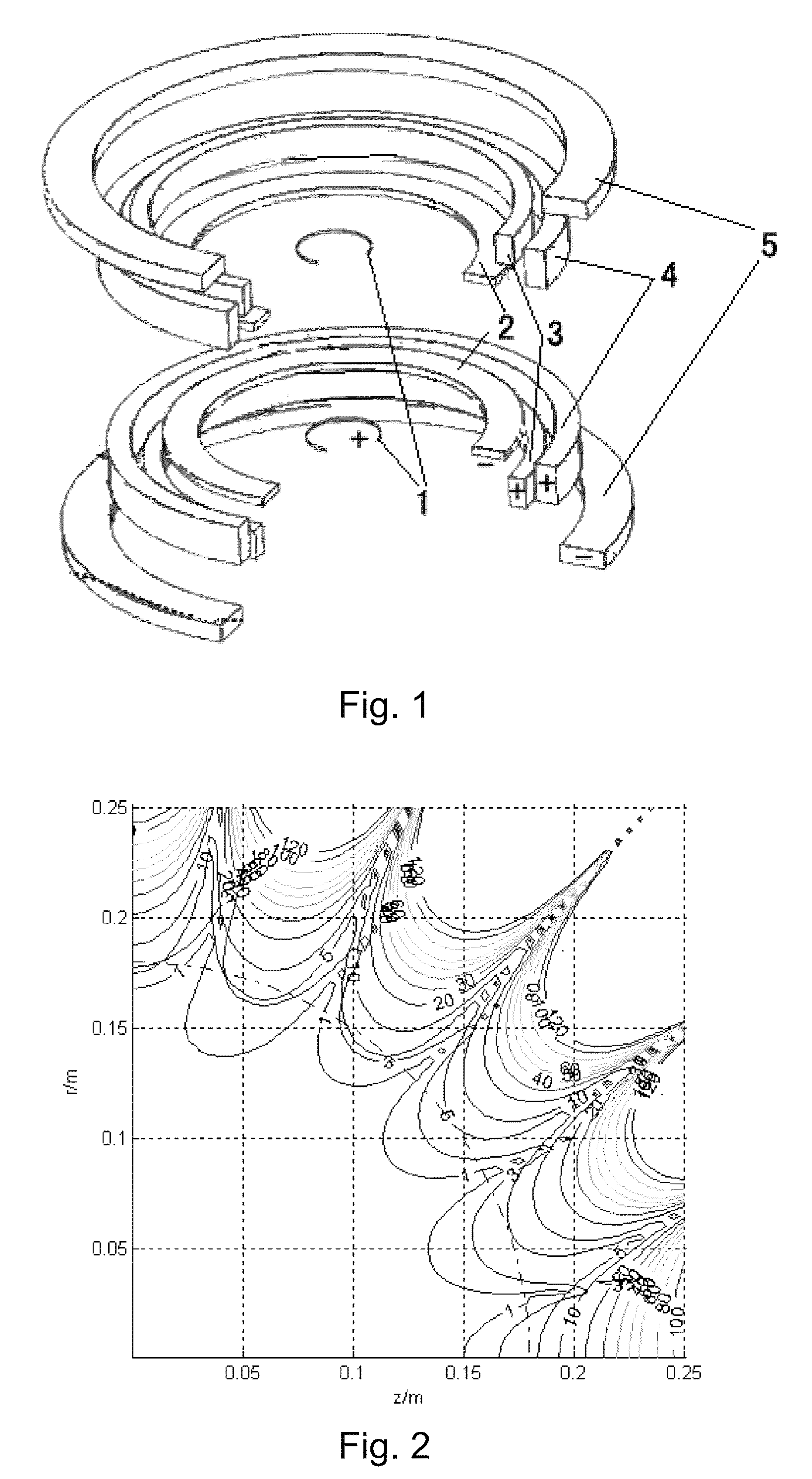Self-shield open magnetic resonance imaging superconducting magnet
a superconducting magnet, self-shield technology, applied in the direction of superconducting magnets/coils, magnetic field measurement using superconductive devices, instruments, etc., can solve the problems of difficult to meet the need for openness in interventional therapy, unsatisfactory openness, cabin fever for some patients, etc., to achieve better electromagnetic compatibility and lower the requirement of floor space
- Summary
- Abstract
- Description
- Claims
- Application Information
AI Technical Summary
Benefits of technology
Problems solved by technology
Method used
Image
Examples
Embodiment Construction
[0019]This invention will be further described in combination with accompany drawings and specific embodiments.
[0020]The structure of the open magnetic resonance magnet of this invention is shown in FIG. 1. This invention comprises five pairs of coils which are symmetric about the center, comprising shim coils 1, first main magnetic field coils 2, second main magnetic field coils 3, third main magnetic field coils 4 and shielding coils 5. The shim coils 1 are arranged closest to the central point, and the first main magnetic field coils 2, the second main magnetic field coils 3 and the third main magnetic field coils 4 are arranged in sequence outward, and the shielding coils 5 are arranged outermost. A main magnetic field is provided by the first main magnetic field coils 2, the second main magnetic field coils 3, and the third main magnetic field coils 4 together. The shim coils 13 compensate the magnetic field in the central region to improve magnetic field homogeneity of the mag...
PUM
| Property | Measurement | Unit |
|---|---|---|
| distance | aaaaa | aaaaa |
| diameter | aaaaa | aaaaa |
| diameter | aaaaa | aaaaa |
Abstract
Description
Claims
Application Information
 Login to View More
Login to View More - R&D
- Intellectual Property
- Life Sciences
- Materials
- Tech Scout
- Unparalleled Data Quality
- Higher Quality Content
- 60% Fewer Hallucinations
Browse by: Latest US Patents, China's latest patents, Technical Efficacy Thesaurus, Application Domain, Technology Topic, Popular Technical Reports.
© 2025 PatSnap. All rights reserved.Legal|Privacy policy|Modern Slavery Act Transparency Statement|Sitemap|About US| Contact US: help@patsnap.com



